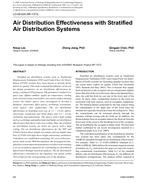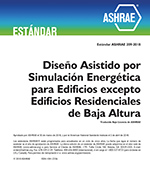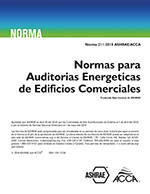Description
Stratified air distribution systems such as Traditional Displacement Ventilation (TDV) and Under-Floor Air Distribution (UFAD) systems have been known to provide better indoor air quality. This study examined the influence of several key design parameters on air distribution effectiveness by using a validated CFD program. The parameters studied were space type, diffuser number, supply air temperature, cooling load, return location, total airflow rate, and secondary heating system. Six indoor spaces were investigated to develop a database: classrooms, office spaces, workshops, restaurants, retail spaces, and auditoriums. The air distribution effectiveness at breathing zone was at 1.1 ~ 1.6 for offices, classrooms, restaurants and retail shops, and 1.6 ~ 2.0 for workshops and auditoriums. The spaces with a high ceiling such as workshops and auditoriums had higher air distribution effectiveness than those with a low ceiling. Thus, the stratified air distribution systems are better for spaces with a high ceiling. The air distribution effectiveness for the TDV and UFAD with low throw height was similar and was higher than that of UFAD with high throw height and mixing ventilation. A database was established containing 102 cases of the parametric study results. With this database, the investigation identified the six most important parameters to follow in developing a set of correlation equations for calculating air distribution effectiveness through statistical analysis. The air distribution effectiveness calculated by the equations was mostly within 10% of that for the corresponding case in the database.
Units: Dual
Citation: ASHRAE Transactions, vol. 115, pt. 2, Louisville 2009
Product Details
- Published:
- 2009
- Number of Pages:
- 12
- File Size:
- 1 file , 1.1 MB
- Product Code(s):
- D-LO-09-029




